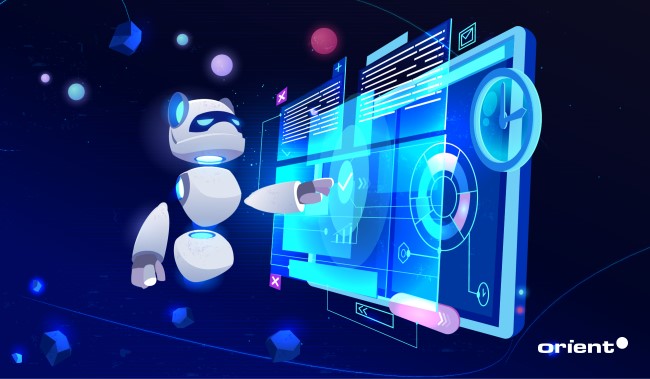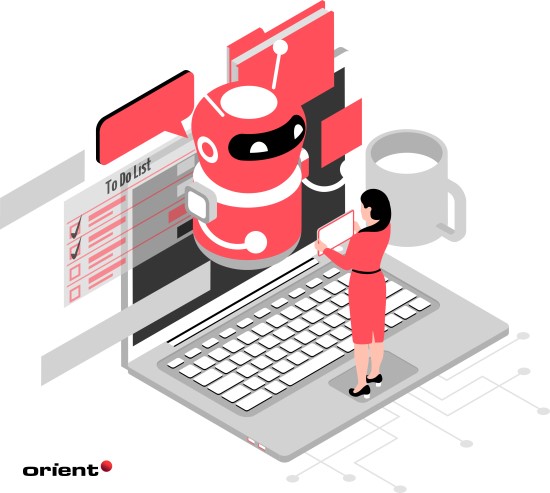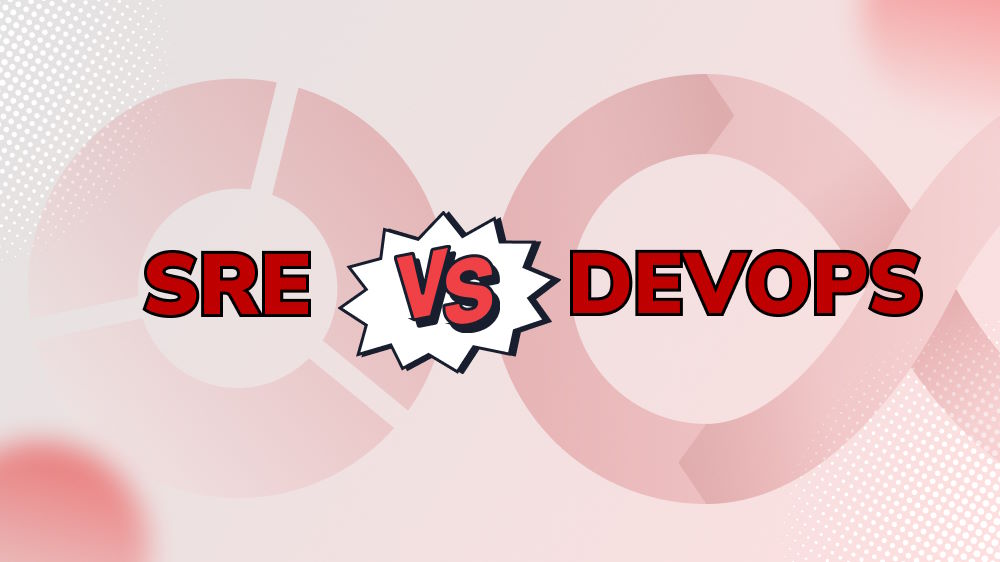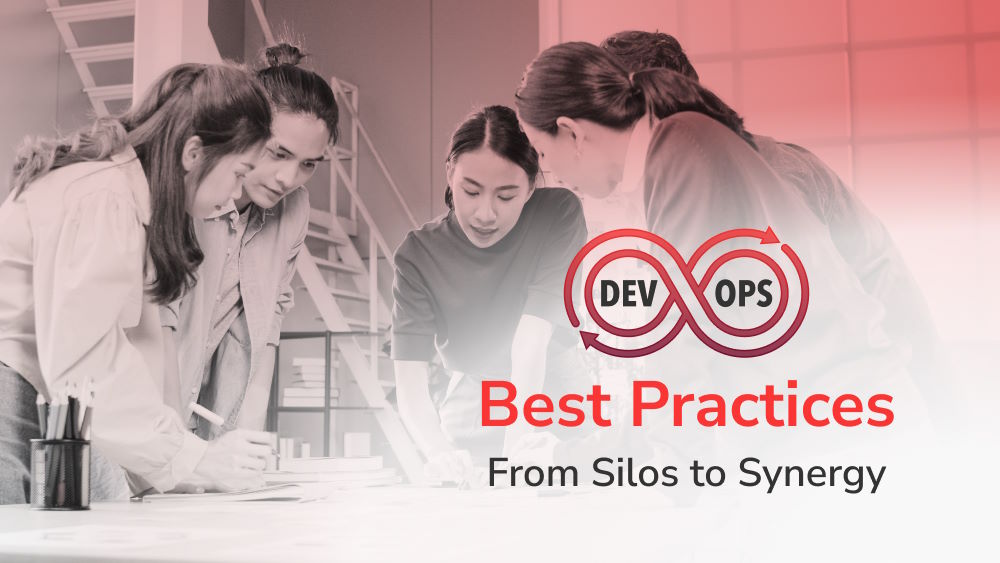An Introduction Guide to Machine Learning DevOps (MLOps)

Content Map
More chaptersMachine Learning (ML) and DevOps are two of the most important and rapidly-growing fields in technology today. As such, it is becoming increasingly crucial for businesses to be able to deploy and manage machine learning models effectively. This is where Machine Learning DevOps (MLOps) comes in, and this new field is quickly gaining popularity. In this guide, we’ll introduce you to the basics of MLOps. Also, we highlight some of the benefits of using MLOps in your business, how MLOps differs from DevOps, and some practical best practices for efficient machine learning DevOps.
A Brief Recap of DevOps
In DevOps definition, it is a software development process that aims to improve collaboration among developers, testers, and operation staff. It is intended to deliver applications more quickly by facilitating repeatable, continuous integration of code changes into the application life cycle. DevOps is an extension of agile development in this regard; however, it also requires continuous testing throughout the entire program so that the application is in a shippable state at all times.
So, What Is Machine Learning DevOps?
At its core, Machine Learning DevOps (MLOps) is a new branch of DevOps in which it combines machine learning (ML) and DevOps. MLOps is an approach to software development that allows organizations to take advantage of machine learning models and algorithms. MLOps helps organizations speed up the process of applying machine learning to their business needs by automating the deployment and management of these algorithms and models. In addition, it enables businesses to easily scale their machine learning capabilities as they grow.
Why Machine Learning DevOps?
There are several key benefits of using Machine Learning DevOps in your business:
- It can help you speed up the process of applying machine learning to your business needs. MLOps automates the deployment and management of machine learning models and algorithms, which speeds up the application development process.
- MLOps enables businesses to quickly scale their machine learning capabilities. As businesses face an ever-growing demand for machine learning services, MLOps can help them keep up with that demand.
- Machine learning DevOps helps improve collaboration among developers, testers, and operation staff, ensuring that applications are delivered quickly and efficiently by improving communication and collaboration among these groups.
Benefits of Machine Learning DevOps
There are many benefits to using MLOps in your business. Some of the key benefits include:
Increased Agility & Efficiency
One of the main benefits of using MLOps is that it enables businesses to be more agile and efficient. MLOps helps to speed up the process of deploying machine learning models, which means that companies can get products and services to market faster. It also helps make this process more reliable and repeatable, making it easier to scale.
Ease of Use
Once model management has been automated, software developers can spend more time developing new features and less time on routine tasks. This makes MLOps highly beneficial for businesses that are looking to boost their velocity.
Improved Team Collaboration
Machine learning DevOps works hand-in-hand with both machine learning and DevOps, two fields that are already popular within businesses. As a result, it dramatically benefits organizations that have both of these teams in place, as they’re able to work together more efficiently than before to improve the speed and quality of their products.
Lower Costs
Because MLOps provides increased machine learning automation, this allows companies to further reduce the amount of manual work involved in each machine learning project. This can significantly reduce costs and save money for organizations that are looking to scale their machine learning efforts going forward.
Easier Collaboration Between Data Science & Engineering
Another benefit of using MLOps is that it enables data scientists and machine learning engineers to work together in a more effective manner. In the past, data science and engineering teams often worked separately from each other - with widely varying results. MLOps helps to fix this by bringing the teams together and enabling them to share tools and processes.
Improved Quality Control
Last but not least, MLOps enables businesses to improve the overall quality of their machine learning models. By automating common processes like model performance management and deployment, MLOps helps businesses to effectively control the entire machine learning process. This ensures that models are deployed faster and more reliably, helping to ensure that they meet business needs.
How Machine Learning DevOps (MLOps) Differs from Traditional DevOps?
As mentioned above, DevOps is a software development methodology that emphasizes collaboration between software developers and operations professionals. Its goal is to enable organizations to rapidly produce software products and services through the use of automation, measurement, and continuous feedback.
In contrast, MLOps (Machine Learning DevOps) is a specialization of DevOps that focuses on the deployment and management of machine learning models. It emphasizes the use of automation to speed up the model deployment process and improve the overall quality of the models.
Here are some key differences between MLOps and traditional DevOps:
- MLOps focuses specifically on the management of ML models, while traditional DevOps is concerned with the entire deployment and management pipeline of machine learning projects. This allows businesses to streamline their efforts when working with machine learning.
- Another difference is that MLOps is automated, while traditional DevOps requires manual model management. This makes the process of deploying machine learning models faster and more reliable, helping businesses to meet their business needs.
- Finally, using MLOps enables businesses to improve the overall quality of their ML models by automating common processes like model management and deployment.
MLOps Best Practices
There are a lot of principles that should be followed when implementing machine learning DevOps in order to achieve success. Some of these principles are:
Coordinate & Collaborate Across Teams
It’s important for all teams involved in the machine learning process to coordinate and collaborate with each other. This includes data scientists, DevOps engineers, product managers, and more. By working together, these teams can share knowledge and expertise, which will help to improve model performance, increase speed to market and reduce development costs.
Data Is One of Your Most Important Assets
Remember, data is a critical asset for any organization, and the same goes for machine learning models. As such, it’s essential to have a plan for how you will manage and govern this data as an organization. This plan should include how your data is collected, who will own the different data sets and how it will be used within your DevOps pipeline. You should also invest in tools that can monitor the data to ensure all of the necessary governance policies are met (e.g., where you can get access to the data, what type of data can be accessed and when etc.)
Automate Wherever Possible
If you’re going to implement a machine learning model in a continuous deployment pipeline, it’s best if there is automation involved with each step. This means that any manual tasks should have automated counterparts that trigger when certain events occur. For example, suppose a data scientist gives a final draft of a model to a DevOps engineer. In that case, there should be an automated trigger that kicks off the deployment process so the model can go into production as soon as possible (and without requiring manual work from anyone).
Train Your Machine Learning Models on Precisely What You Will Use Them for
When a model is deployed in a production environment, it’ll often require labeled data so it can learn how to make accurate predictions. However, suppose this labeled data isn’t representative of the real-world conditions your model will see once it’s life. In that case, you could be making incorrect predictions and putting your users at risk through lower service quality. Therefore, it’s important to have a representative labeled dataset for training your model if you don’t end up in a “Garbage In, Garbage Out” situation.
Include Security & Privacy in Your Machine Learning Pipeline
It’s critical to think about how machine learning will impact an organization from a security and privacy standpoint at the early stages of the process. This is because machine learning models are often black boxes that can be difficult to interpret, so it’s important for teams to work closely together to understand how these models will impact your organization and whether they could potentially be misused or degrade users’ trust in your service. You should also be aware of any compliance requirements around how and where data is stored and used.
Have a Strategy for Model Deployment
When an MLOps pipeline is implemented, it’s important to determine how the pipeline will look and what components should be included in each step. This includes issues such as how your models are monitored, how they are deployed, updated, and archived. Each of these steps should also include a service level agreement (SLA), so you can clearly define areas such as model training turnaround times, how quickly models will be deployed to production, and the frequency of updates.
Ensure Your Organization Is Committed to Machine Learning
With any project or initiative within an organization, it’s essential that all teams are bought into the process, understand what they’re responsible for, and are held accountable for their role. This means you should have a shared understanding of how machine learning will benefit your organization, whether it’s through better accuracy, new services, or improved operational efficiencies. It also means that everyone is on the same page with regards to their roles, processes, and priorities.
Test Your ML Models Frequently
While there are many benefits to deploying machine learning pipelines in a continuous deployment model, this also means that models should be frequently tested so you can assess their stability, accuracy, and other capabilities. Testing will help teams find errors or bugs quickly while still in the development environment, so there’s time to make any necessary changes.
Ensure MLOps Is Treated with the Same Importance as Other Critical DevOps & Automation Processes
Machine learning in production should be given just as much care and thought as other vital processes such as quality assurance, continuous integration, and deployment. This means that your team needs to have dedicated resources for machine learning which focus on everything from identifying new skill gaps to looking for areas where automation can be improved.
Assign Ownership of Machine Learning Areas
It is important to determine who will oversee your organization’s machine learning efforts, including everything from modeling decisions to ensuring processes are being followed. This could be one person or a group of folks who are responsible for specific areas such as training data, model training processes, or experimentation platforms. You should also ensure that all stakeholders communicate openly and often, so everyone is aware of what’s happening with regard to machine learning.
Determine the Most Suitable Tools
When it comes to building out your MLOps team, you should consider tasking different people to find the best tools, platforms, and processes to use. This includes data scientists to identify gaps in your current data pipeline as well as software engineers who can build models using specific programming languages such as Python or R.
Standardize Metadata for Model Input
It’s important to establish a standard for collecting, parsing, and formatting data to ensure that each model is ready for production. You can then use this standardized metadata in a central location that’s accessible by the team to ensure models are being developed against the right input.
Focus on Compliance
In order to improve the accuracy of your machine learning pipelines, teams need to be aware of what’s happening with data throughout the process; this means performing tasks such as tracking what’s being filtered out and why as well as making sure datasets are anonymized. Compliance ensures that all activities surrounding machine learning remain transparent and responsible to those impacted by the technology.
Hold Regular Reviews
At least once a year, teams should hold a review to ensure that all products are within specifications, that your organization knows how to respond in the event of a breach and that you’re still capable of following new regulations. This ensures that you’re always prepared for anything that may impact your data pipelines, including when things go wrong.
Build an Experimentation Platform
One of the most significant challenges when it comes to machine learning initiatives is that teams are unable to test or experiment quickly enough. This means developing a platform that allows for AI experimentation, providing developers the ability to “fail fast” so they can quickly determine what works and what doesn’t without slowing down the rest of the team.
Add Version Control to Your Data Science Pipeline
When working with data, there’s always a chance that things can go wrong. This means taking advantage of version control software to track changes or errors that may occur, which can then be addressed quickly. Version control allows teams to look at what happened in the past and compare it to now, so they understand what triggered an issue as well as who needs to make corrections and why.
Conclusion

MLOps is a new and emerging field that combines the best of both worlds in order to take advantage of the benefits from each. As more organizations want to incorporate artificial intelligence into their decision-making processes, it will be important for them to understand how this technology can help businesses grow and thrive. It’s time we start thinking about what comes next in digital transformation so you don’t get left behind.
This guide helps you get to know MLOps better, where teams should focus when building out their MLOps pipelines and how to leverage its benefits for your project. We hope you learned something and that you will start building out your multi-disciplinary machine learning team soon to improve the speed of your data science cycle.







